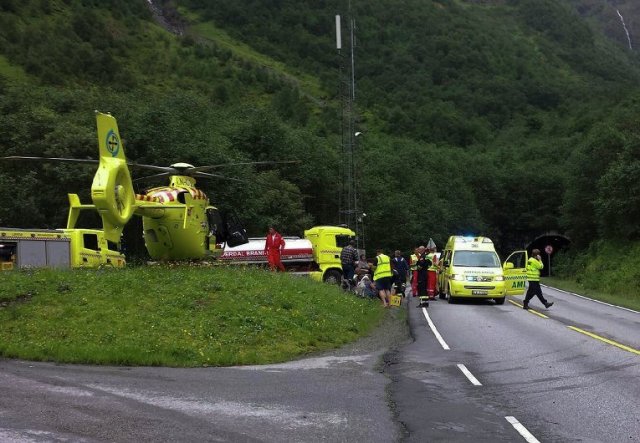
Researchers at the University of Bergen (UiB) has discovered hundreds of volcanoes in the deep sea around Norway. Loki’s Castle can be Norway’s new national park or shop billion in the future.
The unique findings made by Norwegian waters along a 1500 km long volcanic mountain range, which stretches from Jan Mayen to the Fram Strait between Svalbard and Greenland.
Prior to this white spots on the map, we knew nothing about what was there. But using technological tools we have been able to map the ocean floor. The last volcano was found a few weeks ago and is just 20 meters below sea level, says Rolf Birger Pedersen, university professor at the Centre for Geobiology (UiB).
Thursday, he presented the mildly special findings for Environment Solhjell. He was very excited about the now unfamiliar world is found.
– This is the basic science of the absolute highest quality, on an area that we hardly know anything about. As a child I was very concerned Atlantismyten and this is not even close, says Environment Minister.
By Loki’s Castle, as the area is called, researchers from UiB one now unknown volcanic underwater world. Together, they surveyed hundreds of undersea volcanoes and various heat sources.
Here’s a totally unique wildlife, but also rich metal deposits. The professor compares the findings with old mining towns in the country, which Røros.
– Røros mine was formed in this type of environment. It meets 1,200 degrees hot magma with ice-cold water. Several of the volcanoes are active, and you notice it when they are started. But some have also died out, and they have large accumulations of metals, says Pedersen.
Rector of the University of Bergen, Dag Rune Olsen, calling the findings of a “moon landing in the deep sea.”
– This is a spearhead for the University’s marine research, which is quite a global leader. It puts both the western and the university on the map, and continue working on it provides a win-win situation for the region, says Olsen.
Each field has an estimated value of 1-3 billion, according to the professor can be anything from a few hundred to hundreds of fields. How far they may have an economic value in the future is too early to say. At the top is also the environmental and legal aspects.
– Can one mine in the deep sea? It is not known. However, we consider that it can become a reality. Therefore, we are also concerned about potential safety issues in the area. In Canada, for example, they made a national park of the same areas, says Pedersen, who has worked with the area since 1997.
– We’re going to look at these findings and the conclusion is enough that we need more research, says Environment Minister Solhjell.
It is only in the last ten years that the Centre for Geobiology really been able to discovered the new, Norwegian nature, far below. With technological aids they gradually localized more and more volcanoes, for here is the in a row.
The magnitude is so unique that the researchers compared the findings with Yellowstone in the USA and Geysir in Iceland.
– When we began using remote-controlled mini-submarines loosened it. The goal is to have our own further research, says Pedersen.
By searching for specific gases on the surface, scientists can locate the volcanoes of the deep sea.
– We have something we call chemical factories in the deep sea. There is water reactive in an entirely different manner, and there is a unique variety of microorganisms. Only until now have we discovered about 50 new species. These organisms form the root of the tree of life, says Pedersen.
Iron, zinc and copper are just some of the metal deposits that exist, but the unique microorganisms will also be an important step in bioprospecting. That searching for valuable biological and active components from marine organism, which can be used for research and development of new medicines for example on land.
– Knowledge of the oceans is important here, and any commercial interests lie far in the future. But I feel reasonably confident that there will be interest from the public to strengthen research here, says Solhjell.
– Here we have the opportunity to be at the forefront. It is important for us that our research can help policymakers make good and informed decisions about the fields, says Professor Pedersen.
http://www.bt.no/nyheter/lokalt/Har-funnet-Norges-Yellowstone-pa-havbunnen-2939829.html#.Ufr0spL0EYF
http://translate.google.no/translate?sl=no&tl=en&prev=_t&hl=no&ie=UTF-8&u=http://www.bt.no/nyheter/lokalt/Har-funnet-Norges-Yellowstone-pa-havbunnen-2939829.html%23.Ufr0spL0EYF


